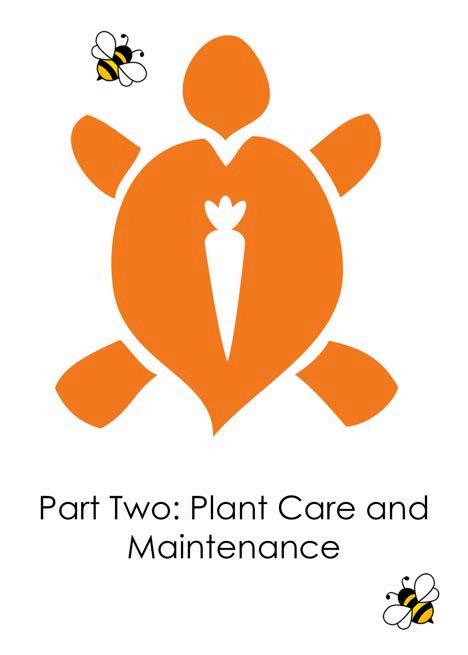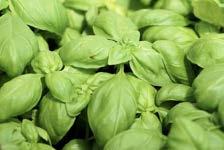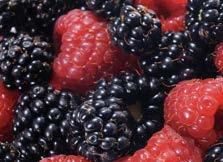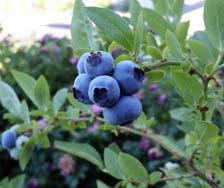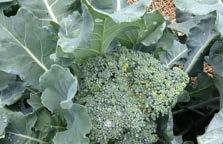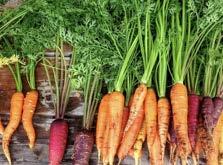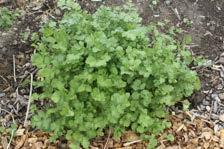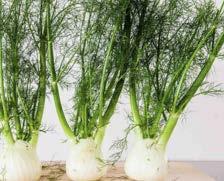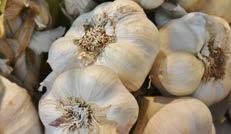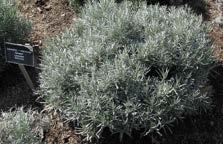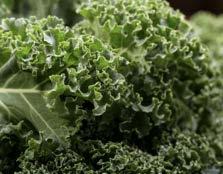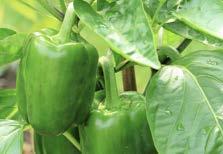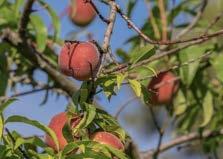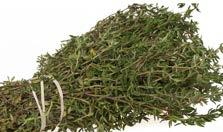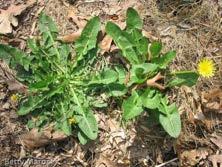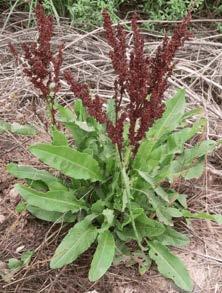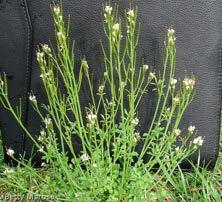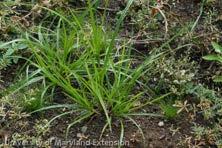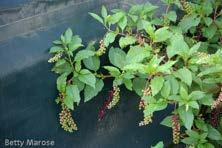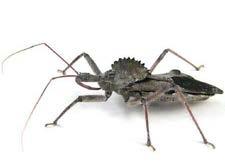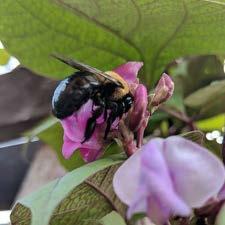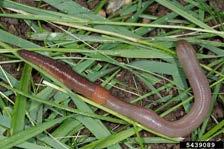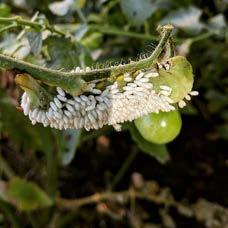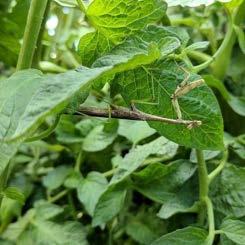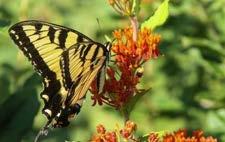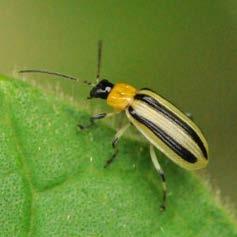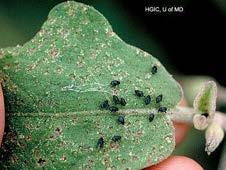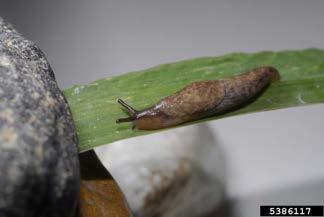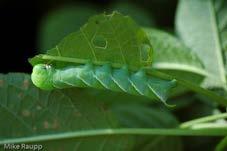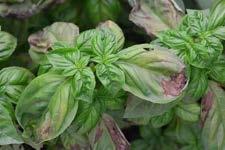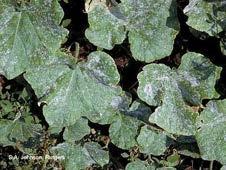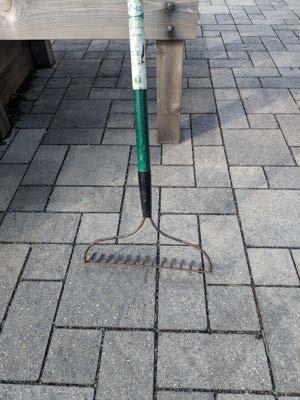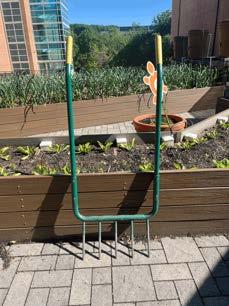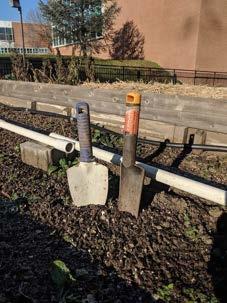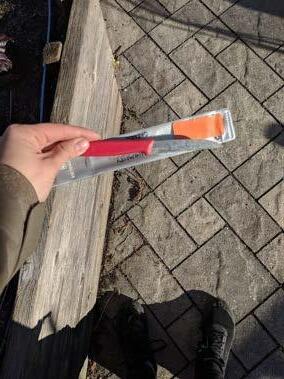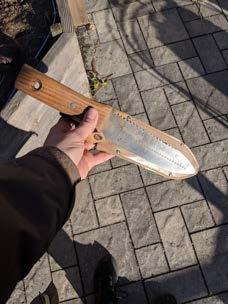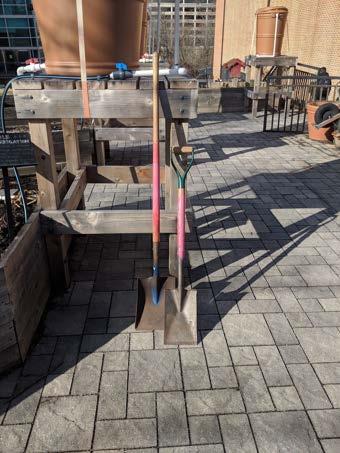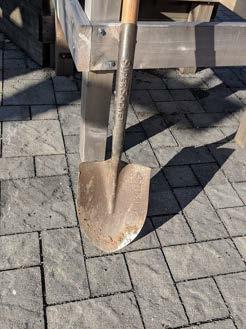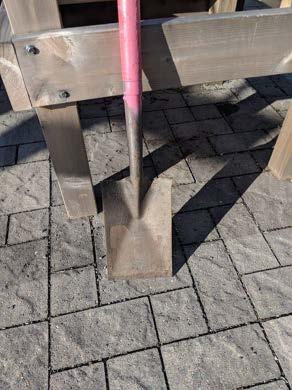Foreword
LocatedbetweenEppleyRecreationCenterandtheSchoolofPublicHealthBuilding,the CommunityLearningGarden(CLG)hassince2011beenahubforstudents,faculty,andstaff lookingtocultivateskillatplanting,maintaining,andharvestingfoodcropsandherbs.Itisalso aplacetobuildcommunitywithotherlikemindedpeersandfriendsthatsharealovefor gardeningandtheoutdoors.
IhavebeeninvolvedwiththegardenforaslongasI’vebeenastudentattheUniversity ofMaryland(UMD),sincethefallof2023.Ibeganvolunteeringforextracreditofferedbyone ofmyprofessorsbuthavesincefoundalovefortheCLGandinthesummerof2024interned therefull-time.Ihavealsocontinuedmyinvolvementwiththegardenintothe2024-2025school yearasapart-timeintern.Ihavealotofplantknowledgetopullfromandthingshavechangeda lotinthegardensincethelastupdateofthismanual,soIdecidedtocreateanewonewith facultyapproval.Thismanualissplitintotwoparts,oneaboutthegardenanditsmission,anda secondpartaboutskills,practices,andgeneralknowledgeaboutplantcareandmaintenance.
TheCLGisaveryuniqueplace:itbringspeopletogetheroutdoorsfromacrosscampus andevenbeyond.WehaveonoccasionevenhostedgroupsofkidsfromplacesliketheCenter forYoungChildren(CYC)oncampusandotherschoolsandsummercampsacrossPrince George’sCounty.Thevastmajorityofthevolunteersthatattendthegardenandparticipatein workhoursregularlyareUMDstudents,however.Anyoneiswelcome,nomattertheirlevelof gardeningexperience.Besides,thepurposeoftheCLGistoteachvolunteersthecorrectwaysto handleplantsandimpartplantingknowledge!Studentsofallmajorsandbodilyabilitieshave beentothegarden:theentire“patio”areathatsitsatopthehillsidecomplieswithstandardsset bythe1990AmericanswithDisabilitiesAct(ADA).TheCLGservesasaplaceforpeopleto makenewfriends,workwitholdfriends,doserviceandexperientiallearningprojects,andlearn aboutplants!Lotsofdifferentprogramshavecometoourgardenhours,likeAirForceROTC andtheUMDSailingClub,andclassesofstudentsfromtheInstituteofAppliedAgriculture (IAA)andbeyondhaveattendedtoo.Wearealwaysworkingtopromotesometypeofhands-on environmentallearningtoallgroupsofstudentsfromallwalksoflife.
Since2020,inresponsetotheglobalCOVID-19pandemic,theCLGhaschangedits responsetodonate100%ofproduceharvestedtotheCampusPantry,locatedinSouthCampus DiningHall.Studentswhoarefirst-generationcollegeattendees,fromethnicorracialminority groups,internationalstudents,studentswithdisabilities,transferstudents,transgenderorgender non-conformingstudents,orstudentsfromlowersocioeconomicbackgroundsareoftenthose mostaffectedbythepandemicandrisksposedbyfoodinsecurity(Wanget.al.).Additionally, foodscarcityisbecomingmoreprevalentcampus-wide,with27percentofstudentsexperiencing highratesoffoodinsecurityasof2023inastudyconductedbyDr.Yu-WeiWang.Thegarden hasrespondedtotheseconditionswithaconscientiousapproachthatprioritizesourmost vulnerablecommunitymembers.TheCLGteachespeopleaboutwheretheirfoodcomesfrom, anditalsofocusesonsustainable,ethicalpractices.
ThecommunitysurroundingtheCLGisextremelywarmandwelcomingandIamgladto beapartofit.Ihighlyencourageanybodytogetinvolvedwiththegarden!
Ihopethisupdatedmanualishelpful!
EllieDugan
Fig.1:CampusGardensLocationMap
Location
UMDhastwofunctioningon-campusgardens:theCLGandtheChef’sGardenoutside oftheStampStudentUnion.TheCLGislocatedbetweenEppleyRecreationCenterandthe SchoolofPublicHealthBuildingonthenorthsideofcampus.WorkattheSt.Mary’sGarden outsideofSt.Mary’sHallhasbeenpausedduetoPurpleLineconstruction,whichisestimatedto continueuntil2027.
History
TheCommunityLearningGardenwasoriginallythe“PublicHealthGarden,”astudent projectwithstart-upfundingfromtheUniversityofMarylandSustainabilityFund.Itsnamehas sincechangedtoreflectitscurrentmissiontoengagethecampuscommunityandprovidevital foodresourcestoallstudents,faculty,andstaff.Studentswerealsooftenconfusedbythename “PublicHealthGarden”,sinceitimpliedthatonlystudentsinPublicHealthcouldusethespace, warrantingthechange.
In2010RachelTennantwroteagranttoUMD’sSustainabilityFundwithsupportfrom GloriHyman,DirectoroftheInstituteofAppliedAgriculture.Oncehavingsecuredthegrant funding,agroupofstudentsformedthe“PublicHealthGardenClub”leadingtheefforttoturn theexistingovergrownhillsidespaceintothefunctioningamenitythatthegardenistoday.
Makingthegardenarealityrequiredsettlingonadesignforthesite.Studentsinthe courseLARC321intheLandscapeArchitectureprogramconductedacompetitionamongst themselvesinteams,selectingawinningdesign.Constructionbeganshortlythereafter,withthe firststepbeingtocleartheunrulyhillsideofweeds.Toshavedowntheovergrowntangle, students“hired”Eco-Goatsthatclearedthesite,preparingitforconstruction.Eco-Goatsarea greatsustainablealternativetomethodslikechemicaltreatmentsorheavymachinery,whichcan bejustaseffectivebutareenvironmentallyhazardous.
ConstructionofthesixthandfinalraisedbedoftheCommunityLearningGardenwas completedin2014,andtheterracesforthecommunitygardenwereinstalledin2015.Inpart thankstoagrantfromPrinceGeorge’sCountyGovernment,ourbio-retentivestormwatersystem wasdesignedbyDr.AllenDavis,withassistancefromaMasterofLandscapeArchitectureclass andLARC321,toreducecontaminatedrunoffintotheAnacostiawatershed,andlaterinstalled. Today,thegardencontinuestochangeandgrow.
Wewouldliketogivespecialthankstoeveryonewhohelpedmakethisgardenareality, whetherthroughgenerousgrantsanddonations,ortheirtimeanddedication.TheCommunity LearningGardencontinuestobeaplaceforstudentstolearnsustainablepractices,honetheir gardeningskillsandplantknowledge,andmeetnewfriendsanddeepencommunityties.
MissionStatement
Ourmissionstatementisasfollows:TheUMDCommunityLearningGardenisa collaborativespacewherestudents,facultyandstaffputintopracticelessonsaboutthe importanceoffoodproduction,environmentalstewardship,agriculturalsustainability,physical activity,andbalanceddiets.Itservesasalivingclassroomforexperientialeducation,andasa centralmeetingpointandcommunitybuildingtoolfortheUniversityofMarylandandgreater CollegePark.
Club
TheUniversityofMarylandCommunityLearningGardenClubisastudent-run organizationthatmanagesgardenoperationsandevents.Theclubconsistsofvolunteersanda leadershipteam.TheleadershipteamcurrentlyconsistsofaDirectorofOperations,aDirectoror RecruitmentandRetention,aDirectorofCommunications,andaDirectorofFinances.Each memberhasdifferentresponsibilitiesthatarevitaltothesuccessfuloperationoftheCLG.Any volunteermaybepartoftheGardenClub,regardlessofhowfrequentordedicatedofavisitor theyare.
Volunteering
WorkhoursarehostedinthegardeneveryMondaybetween3:00-4:00pm,Thursday between3:00-5:00pm,andSaturdayfrom10:00-11:00am.Generally,duringthesemester,the gardenhostsvolunteersfromtheMondayafterSpringBreaktotheMondaybefore Thanksgiving.Duringsummerbreak,workhoursarefrom10:00-12:00pmonMondaysand Thursdays,andonSaturdaysfrom10:00-11:00am.Pleasecontactamemberoftheleadership teamorconsulttheArboretumEventsPageformoreinformation.
SocialMediaandCommunications
TheCLGusesseveralsocialplatformstocommunicateeventsandupdatestostudentvolunteers. WemostfrequentlyuseourInstagrampage.JoinourGroupMeorSlacktocommunicatedirectly withothervolunteers,facultyadvisors,andmembersoftheleadershipteam.
SocialandEducationalProgramming
TheCommunityLearningGardenhostsavarietyofevents,bothsocialandeducational. Mostrecently,theUniversityofMarylandcelebratedits100thAgDayaspartofthelarger campus-wideMarylandDay.Studentvolunteersfromthegardenclubhelpedtotableforthe CLGandengagedvisitorswithgamesandseedgiveaways.Thegardenalsohostsevents coveringsustainablegardeningpracticeslikecompostingandteachesvisitorsandvolunteers abouttheimportanceofpollinators,seedingandgrowingplants,andhomegardening. Memorably,lastsummer,agroupofkidsfromtheCenterforYoungChildrencametothegarden tolearnaboutdifferentkindsofbeesandthe“dances”theydotounhooktheirwingswhilethey restintheirhives.
Partnerships
DespitehavingsmalloriginsasastudentprojectoutoftheSchoolofPublicHealth,the CLGhassincegrownintoacollaborationbetweenseveralprominentcampusinstitutionslikethe InstituteofAppliedAgricultureandtheCollegeofAgricultureandNaturalResources.
DuringthefoundationandbuildingoftheCommunityLearningGarden,thegarden receivedsignificantsupportfromthePlantScienceandLandscapeArchitectureandtheCivil andEnvironmentalEngineeringdepartments.ItalsoreceivedhelpfromPotomacValleyBrick
andTWPerry,whodonatedbuildingmaterialstotheproject.TheCLGalsopartnerswiththe StudentGovernmentAssociation(SGA)andtheUMDOfficeofSustainability.
Mostnotably,thegardenhasastrongpartnershipwiththeCampusPantry,towhichall producegrowninthegardenisdonated.Lastyearin2024,thepantryreceivedapproximately 1,280poundsoffreshfruits,vegetables,andherbsfromthegarden.Thecollaborationbetween thegardenandthepantryhelpsprovideindispensablenutritionalsupporttothestudentbody.
Forthe2024-2025schoolyear,theCLGhasforthefirsttimepartneredwiththeDo GoodInstitutetofundapart-timestudentinternshipopportunityinthegarden.That’smyjob! OtherstudentinternswhosepositionsarefundedbythesameDoGoodFundareemployedatthe CampusPantry,TerpFarm,andtheCounselingCenter.Thegarden’sinfluenceiscontinuingto expand.
SpecialthankstoRandieHovatterofTheBoldBrushforourgraphicdesign,especially ourbelovedcarrotterplogo.SpecialthankstoWingMei,ourformergardenclubpresident,who conceivedofthisgardenmanual.AnotherspecialthankstoRubyDessiatoun,whowrotethefirst completeversionofthismanual.
Impact
Since2020,thecampusgardenshavedonatedjustshyof10,000poundsofproduce valuedatover$26,500totheCampusPantry.In2024alone,acumulative1,280poundsof producewasdonated,providingmuch-needednutritiousproducetothoseneedingitmost.Inthe Fall2024semester,theCampusPantryrecordedmorethan10,000individualvisits,including repeatvisits.Thisrepresentsamorethan25%increasecomparedtothesameperiodin2023, withover28,000poundsoffooddistributedinjusttwoandahalfmonths(“2024Cornerstone Presentation”).Pantryservicesarebeingincreasinglysought,with24,137visitorsrecordedin 2024,sotheCLGtooisbecomingmoreimportantthanever(“2024CornerstonePresentation”).
Fig.2:CLGSiteMap
TheCommunityLearningGardenhasseveralongoingprojectsandspacesdedicatedto differentfocusareas.Amongthosethatarehighlightedaboveinthesitemaparethenative wildflowergarden,theherbgarden,adobechimneybeenests,thebioswaleandirrigation facility,theterracedgardenbeds,theorchard,theaccessibleteachinggarden,andthenew“bird beds”firstplantedbytheUniversityofMarylandAudubonSocietylastspring.
1. NativeFlowerBeds
Aneweradditiontothegarden,thenativeflowerbedsatthebottomofthehillsidenear theherbgardencontainnativespecieslikeblack-eyedSusans,Maryland’sstateflower,aster, milkweed,andbeardtongue,amongothers.
2. HerbGarden
TheherbgardenwasfirstfoundedbyastudentintheInstituteofAppliedAgriculture takingINAG102–AgriculturalEntrepreneurship–asabusinessventureforgrowingandselling teaingredientslikespearmintandchamomiletotheUMDFoodCo-op.TheCo-ophassince permanentlyclosedasofMay31stin2019.Today,herbsgrowninthegardenaredonatedtothe CampusPantryforvisitorstotakehome.Theyarealsosometimesusedasingredientsincooking demonstrationsbytheTeachingKitchenatthepantry.Lastsummer,thepantrymadelavender lemonadewithlavenderharvestedfromtheherbgarden!Currentlygrowingintheherbgardenis rosemary,lavender,yarrow,lemonbalm,chamomile,sage,bayberry,andthyme.
3. AdobeChimneyBeeNests
NearestEppleyRecreationCenterareadobebeenestsmanagedbytheDepartmentof Entomology,whichprovidevaluablenestinghabitatforsolitarybees.Thesebeesaregentleand excellentpollinators,andaremostactiveinlatespringintoearlysummer.Theirearthennestsare constructedusingwaterandformchutesresemblingturretsorchimneys.Thisareaprovidesa habitatfornativebeesandsupportsentomologyresearch.
4. BioswaleandIrrigationSystem
Immediatelynexttothegardenthereisabioswalethatfiltersrunofffromsurrounding impervioussurfaces.Stormwaterrunofffromthedrainageareawithintheparkinglotadjacentto CumberlandHallisreceivedthroughaflumeanddepositedintothethreebioretentioncells. Eachofthesecontainsanativespeciesofplant–sunflower,NewEnglandaster,and goldenrod–whoserootmasshelpstoabsorbpollutantsandreducesstormwatervolume.These plantsalsofeedourchimneybees,whichhaveaflightradiusofnogreaterthan500metersand needfoodcloseby.Theremaininggreywaterisstoredinacisternand,usingsolarpanels,the waterispumpedintorainbarrelstobeusedintheraisedbedsandbycommunitygardeners. Waterisroutinelytestedtoensurefoodsafety.Additionally,atthetopofthebioswale,thereisa stormwaterresearchstationthatcanbeprogrammedtocollectrunoffwaterduringstormsfor environmentalresearch.Waterthatcannotbecollectedbythebioswaleandcisternisredirected toaraingardenatthebottomoftheterracedhilltoincreasewaterretentionandslowrunoff. Despiteitsbenefits,however,theirrigationsystemislargelyineffective.Thecisternisrarelyfull enoughtoactivatethepumpduetoinfrequentrainsthatarebecomingmorecommonplace.
Whenitdoesrain,itoftenfloods,andrainwaterescapesthecisternasoverflowandcannotbe usedtoirrigatetheteachinggarden.
5. GardenTerraces
Makingthemostoutofthesteephillsidetopography,theCLGisdesignedwithsix terracesofvaryingsizesthatmuchofourcropsaregrownin.Thisspaceisnotaccessiblesince itsslopeissosteep.Theterracesareretainedbystacked“boxes”thatmayalsocontainspeciesof flowersorherbslikedianthusorchivesforseasonalinterest.Currentlygrowingoneachofthe terracesiskale,mustardgreens,chickpeasandlentils,bokchoy,napacabbage,andgarlic. Furtherdownonthehillsideareapatchofblueberriesandapatchofstrawberries.
6. Orchard
TheCLGisresponsibleforseveralfruittrees,includingapples,pears,andcherries.We partnerwiththeUniversityofMarylandArboretumtocareforthem.
7. TeachingGarden
Theraisedbedsatthetopoftheterracedhillaremanagedbythegardencluband volunteers.TheareaisADAcomplianttoensurethatallpeopleofdifferentbodilyabilitycan accessthegarden.Thepavingintheteachinggardenispermeable,allowingforreducedrunoff anderosioncontrol.Manyofourexperientiallearningopportunitiesforcollegestudentsand programsforyoungchildrenfromtheCYCandTerpQuestareheldhere.Therearefiveraised bedsontheentiretopofthehill,whicheachcurrentlycontaindifferentspringcrops:spinach, kale,napacabbage,greenonions,cilantro,arugula,garlic,andswisschard.Therearealso severalpotson-site,whichthisseasoncontainginger,turmeric,sage,chrysanthemum, strawberries,andspearmint.Cropselectionsmayvaryyear-to-yearsothesoilintheraisedbeds isnotleachedofnutrients.
8. Audubon“BirdBeds”
Lastspring,theUMDAudubonSocietyplantedfourpollinatorgardensoutsidetheSPH building.Thefirstbedisvisibleonthesiteplanabove;theotherthreeareinterspersedalongside thesamestripofwalkwayclosetothegarden.Thesebedsareplantedwithnativeflowerspecies, muchliketheplantingsatthebottomofthehillside.
9. FigOrchard
InfrontoftheSchoolofPublicHealthBuilding(SPH)isarowof‘BrownTurkey’figs, whichripeninthesummertimeandproducegreat-tastingfruitsuntilaboutearlyfall.Just recently,volunteersplantedeightmorebabyfigtreesfromcuttingsinfrontoftheSPHbuilding, fillingouttherestoftherowandaddingtotheexistingfourfigs.
GardenRules
Tokeeporderinthegardenwehaveafewstraightforwardrules:
● HarvestingisfordonationtotheCampusPantry.
● Pleasedon’tstepinanyofthebedsunlessforwork.
● Followfoodsafetyguidelinesasoutlinedbelow.
● Ifyouwishtovolunteeraspartofalargegroup,contactgardenclubleadership viaemailatumdlearninggarden@gmail.com orreachouttoMegSmolinski,the ArboretumOutreachCoordinator.
● Pleasedonotcometoworkhoursorvolunteerifyouaresick.
● Nosmokingorlitteringinthegarden.
● Pleaseputeverythingbackwhereyoufounditaftervolunteeringandmakesure tokeeptrackofalltoolsandgardenmaterials.
● Respectourlistofprotectedspecies:monarchbutterflies,swallowtailbutterflies, prayingmantises,honeybees,earthworms,andbumblebees.Pleasedonotharass, disturb,orremovethesespeciesfromthegarden,inanystageoftheirlifecycle.
FoodSafetyProtocols
Ourgardenhastwofoodsafetyprotocols,oneforharvestingandoneforhandwashing thatwerequestourvolunteersfollowandthatwefollowduringworkhours.
FoodSafetyProtocols
CleaningandSanitizingToolsandHarvestEquipment
1. Whenharvesting,useonlyredbasketsoryellowbins.Theyare keptintheshedontheleft.
2. Usetheprovidedlinersfortheharvestbins.
3. Cleanandsanitizeallbaskets,bins,scissors,snips,andknives beforeandafterharvesting:
a. Ifvisiblydirty,washthebinortoolwithwaterorspray withadisinfectantcleaner.
b. Rinsethewipedbinortoolwithcleanwater.
4. Useonlysanitized/cleanbasketsorbucketstocollectharvested produce.
5. Alwaysusethedesignatedharvestbaskets/bucketsandavoid layingtheharvestedproducedirectlyonthegroundorinthebed.
6. Donotharvestproducethathasbirddroppingsonitoriswithin1 ½feetofanimaldroppings.
7. Gentlyshaketoremoveexcesssoilfromtheproduce.
8. Donotminglefruitsthatwillbesoldforconsumptionwithfruits thatarebruised,showingsignsofrot,orappeartohavebeen partiallyeatenbyabirdoranimal.
9. Keepdamagedfruitsseparateanddeposittheminoneofthe wheelbarrowsorbucketsunderthewoodenshelterbythe entrancetothegarden.Theywillbeusedforcompost.
Despitegardenershavinghadtheirownindividualplotsinyearspast,theCLGnow growsproduceexclusivelyfordonationtotheCampusPantry.However,muchofthe informationincludedinthefirsteditionofthismanualinthissectionlikepestanddisease managementandplantinginstructionsisuniversal.
Communityresourcesthatengagepeoplewiththeoutdoorsandteachthemaboutplant careandmaintenancearevital.Ibelieveit’saskillthateveryoneshouldlearn,andIwould encourageanyUMDstudenttogetinvolvedwiththeCLG.Growingourownfoodandcaring forourowngardenscanbefulfillingandrewarding,andknowinghowtodoitproperlycan benefitourselves,others,andourecosystems.
Planningandmaintainingagardenofthissizeisalotofwork.Wethankyouforyour timeandeffortasavolunteer!Thisguidewillprovideinformationandresourcestohelpyouget onyourwaytosuccessfulgardening.Ifyouhaveanyquestions,pleaseaskamemberofthe gardencluborafacultyadvisor,andwewilldoourbesttohelpyou.
CropCalendarandPlanning
TheUniversityofMarylandisinthePlantHardinessZone7a.Before2012,however, theCollegeParkregionwasclassifiedasbeingPlantHardinessZone6b.Withtheadvancement ofclimatechange,plantsthatwerepreviouslyadaptedtocoolerMarylandclimateshavesince becomestressedandunabletogrowtheirbestinthesamelocations.Marylandnowhaslonger, hottersummers.PlantHardinessZonesindicatetheintensityofthewintersandarethestandard bywhichgardenersandgrowerscandeterminewhichplantstogrowandwhere.
Additionally,allcropshaveidealtemperaturerangesforplantingandgrowth.Toensure thebestsuccesseachseasoninthegardenitisimportanttomakesureplantsareplantedasclose totheidealrangeaspossible.Plantingoutsidetheidealrangemayresultinunhappyplantsthat donotflourishorfullyripen.
CropRotation
Croprotationinvolvesplantingcropsinfourgroups–legumes,leafyvegetables,fruiting crops,androotcrops–onarevolvingbasisfromseasontoseason.Croprotationcanhelpbuild healthysoilsandmanagepestsanddisease.Neglectingtorotatecropsmightresultinnutrient deficienciesthatmakeplantscompletelyunabletogerminateorgrow.Anidealfour-year rotationmightseeyouplantlentilsfollowedbycabbage,tomatoes,andlastlyradishesonthe sameplotoflandtomaximizethehealthandnutritionofbothplantsandsoil.
CoverCrop
CovercroppinghasanumberofbenefitsfortheCommunityLearningGarden.During thewinter,whentemperaturesaretoolowtosupportmostplantgrowth,thegardenisplanted withcovercropslikeclover,rye,orwinterfieldpeas.Covercropshelptorejuvenatethesoiland retainwaterwithrootmassthatwouldotherwiserunoff,reducingtheriskoferosion.Theyalso increaseorganicmattercontentandnitrogeninthesoil,especiallyifthesoilisplantedwith legumes,whichhaveasymbioticrelationshipwithsoil-dwellingnitrogen-fixingbacteria.
PestManagement
TheCommunityLearningGardenadherestotheUSDA’sNationalOrganicProgram standards,whichregulateallowablefertilizersandpesticides.ThegardenusesIntegratedPest Management(IPM),asustainableapproachfocusedonminimizingpestdamagethroughcareful monitoringandtargetedaction,ratherthanstrivingforaperfectharvest.Thegoalistobalance pestcontrolwithenvironmentalandeconomicconsiderations.
Pestcontrolpracticesfallintofourcategories.Physicalmethodsincludehand-picking pests,applyingSurround,akaolinclaybarrier,andusingrowcoverstoprotectcrops.Cultural practiceshelppreventpeststhroughpruning,mowing,rotatingcrops,polyculture,andcover croppingwithrye,whichimprovessoilandsuppressesdiseaseandweeds.Biologicalcontrols supportnaturalpredatorsbyplantingpollinator-friendlyflowers,releasingladybugs,andusing Bacillus thuringiensis,anaturalpesticidetargetingcaterpillars.Chemicalcontrols,usedonly whennecessary,includeorganic-approvedoptionslikeneemoil,copper,pyrethrin,SaferSoap, andSpinosad.
Planting
Dependingonthespeciesofplant,plantingtechniquescanvary.Someplantsshouldbe eitherdirectlyseededortransplanted,anddifferenttypesrequirevariousspacingdependingon theirsizeandspread.Forexample,squashandcucumbersmustbeseededfurtherapartthan spinachorarugula.Agardenershouldalsoknowsunlight,soil,andwaterrequirementsforeach plantandcorrectlyusesoilamendmentslikecompostorfertilizerifneeded.
DirectSeedingandTransplanting
Therearetwomethodstogettingplantsinthegroundoutdoors:directseedingor transplanting.Directseedingiswhenseedsareplanteddirectlyintothesoil,whereas transplantedseedsarestartedindoorsinsmallcontainersortraysandthenplantedoutsideata laterdate.Becausetransplantsareoftenstartedindoorswhileitisstillcoldoutside,thisgives themaheadstartondirectseededplants.However,itrequireshavingasuitablelocationand toolstostartplantsawayfromthegarden.Luckily,theCLGhasaccesstothecampus greenhouseandhasbeenabletostarthundredsofcropsthisseasoninastable,warm environment.Transplantingincreasesthelikelihoodofgerminationandsurvival,whichinturn canleadtoamorefruitfulharvest!Itcanalsoshortenthetimeinbetweenharvestsofcropsby eliminatingtheneedforthetransplantedcroptogrowbigenoughfromseedoutsidetoproduce fruit.Whentransplantingaplant,especiallyonethatis“rootbound,”orhasavisiblemassof rootsintheshapeofthecontaineritwasin,itisimportanttogentlybreakuptherootsbefore planting.
Spacing
Itisimportanttoconsiderspacingwhenplantingseedstoensureplantsareabletogrow appropriately.Smallerplantscanbeclosertogether,whileplantslikesquashesneedasubstantial amountofspace.Whendirectseedingitmaybebeneficialtoplantafewseedsclosertogetherto thenthinthesmallestonesoncetheyhavegerminated.Plantingdistanceinrows–howfarapart plantsshouldbeinrows–andplantingdistancebetweenrows–howfarapartrowsshouldbefrom eachother–areeachcrucialtoconsider.
LightRequirements
Plantsneedlightexposuretoeffectivelyphotosynthesize:convertsunlight,water,and carbondioxideintoglucoseandoxygen.Appropriatelightexposureiscrucialtoknowforplants tothriveunderthecorrectconditions.Forexample,tomatoplantslovefullsun,requiringatleast sixhoursperday,butanindoorplantlikeasnakeplantdoesbestinlow,indirectlight conditions.Mostfoodcropsneedfullsunofatleastsixtoeighthoursofexposuredaily.
Watering
Wateringfrequencyshoulddependonaspeciesofplantanditsneeds,soiltexture,and localweatherconditions.Smaller,youngerplantsneedwatermorefrequently,whileestablished plantscanbewateredmoredeeply.Plantsshouldalsobewateredearlyinthedayorinthelate afternoontoensurethatthehighestintensitysunlightisnotshiningonwetleaves.Adequate wateringensuresthataplantisabletothriveandproduceripe,healthyfruits.Italsoestablishes root-soilcontactbetweenatransplantandthesurroundingsoilandencouragesnewgrowth,so makesuretowaterinaplantjustafterplanting.Whenwatering,makesuretothoroughlysoak thefirstseveralinchesofsoilandmakethreepasseswiththehosetoensurethatwaterinfiltrates anddoesn’tpool.
ThegardeniswateredduringworkhoursonMondays,Thursdays,orSaturdaysorbya castofvolunteerswhenneeded.Waterispreferentiallyusedfromtherainbarrelsbutthegarden mayaccessWashingtonSuburbanSanitaryCommission(WSSC)waterwithahosefromthe SchoolofPublicHealthandatthebottomofthehillsidefromEppleyRecreationCenter.The CLGalsohasthreesprinklerheadsinsidethesheds.Whenwateringbyhand,ahoseheadisused tosprinklewaterasopposedtopouringit,whichminimizesdamagetoplantsandreducesthe riskofsoilerosionanddisplacement.Bedsarewatereduntilthesoilisevenlywettedand allowedtodrybetweenwatering.
Fertilizing
Fertilizerisusedtosupplyplantswiththenutrientsthatarenecessaryforthemtogrow. Fertilizersmaybenaturalororganic.AttheCLG,compost–decomposedorganicmatter–is integratedintothesoileveryspring,additionallyimprovingsoilstructureandwaterretention, andenhancingsoilaeration.Annualsoiltestsareusedtoevaluatethesoils’nutrientcomposition anddeterminetheappropriateamendments.TheCommunityLearningGardengetsLeafGro compostfromtheWesternBranchFacility,aPrinceGeorge’sCounty-basedservice. CompostablematerialsfromDiningServicesaswellastheCLGandFacilitiesManagementgo tothefacilitytobeprofessionallycompostedforfood-gradesafety.PurchasingLeafGrokeeps ourcompostlocal!
Thegardenusesalfalfameal,bonemeal,andcrushedcrabmealcompostbeforeplanting inthespringtime.Theseorganicfertilizerscontainpotassium,phosphorus,nitrogen,andother vitalsupplementalnutrients.OurbonemealissourcedfromSevenSpringsFarm,aCommunity SupportedAgriculturalorganizationandorganicgardeningsupplierinVirginia.
Fishemulsionistheonlypost-plantingfertilizerthattheCommunityLearningGarden uses.Itisafoliarnitrogenfertilizer,meaningitcanbesprayedontheleavesofplantsafter plantingiftheplantisexperiencinganitrogendeficiency.
Lastly,sincemostofthesoilattheCommunityLearningGardenisimported,itspHis oftentoobasicforplants.ToreducethepH,elementalsulfurisaddedinthelatefall.Thesulfur thenacidifiesoverwinterandbringsthepHdowntoaplant-happylevel.
Harvesting
Harvestingplantscorrectlyisimportanttopreserveflavorandquality.Eachcrophas specificneedsandmanyrequireacertaintoolorverygentlehandling.Itisalsocrucialtoharvest vegetablesattherightstageofmaturity,solookforsignsofripenesslikecolor,size,andtexture. Generally,leafygreensmaybeharvestedbycuttingorsnappingtheouterleavesoff,root vegetablescanbegentlyliftedwithagardenforkoraspade,andfruitingcropsandlegumescan besnippedortwistedfromthestem.Makesuretoupholdfoodsafetyprotocolswhenharvesting anddropyourharvestonlyintheredoryellowbins.Don’tforgettouseabinliner!
CropDatabase:PlantRequirementsandCharacteristics
TheCLGhasplantedmanytypesoffruitsandvegetablesinthegardeninthepast.Here areseveralofthemostcommonandtheirindividualplanting,harvesting,andmaintenance requirements.Plantsareeitherannual–plantswithasinglegrowingseason–biennial–plantswith twogrowingseasons–andperennial–plantsthatcomebackyearafteryear.Moreabouteachplant islinkedinthetitle.
ApplesandPears:deliciouspomefruits! BestplantedinlateFebruarythroughMarch.
● Spacing:distancebetweentrees shouldvarydependingontheir cultivarandadultsize;bestplanteda distanceawaythatisthetreeheightat maturity.
● Sun:6-8hoursofdirectsunlight.
● Water:waterasneededtosupplement rainfall.
● Soil:well-drained,fertilesoil.
● Harvesting:gentlygraspthefruitstem andtwistorliftupward.
Basil:verypopularattractiveannual commonlyusedincooking.
● Spacing:12-18”apart.
● Sun:fullsun.
● Water:wateronceaweek.
● Soil:nutrient-rich,well-drainedsoil.
● Harvesting:greenleavescanbe pickedabout6weeksafterplanting.
Beets:semi-hardyrootvegetable.Plantin earlyspringandlatesummer.
● Spacing:3”inalldirections.
● Sun:toleratespartialshade;grows wellwith4-6hoursofdirectsunlight perday.
● Water:keepplantsuniformlysupplied withwater.
● Soil:highrequirementfornutrients.
● Harvesting:pullbeetrootswhenthey are1-3”indiameter.
Blackberries:perennialthatfruitsinthelate springintotheearlysummer.Plantafterthe lastspringfrost.
● Spacing:3-4’apartinrowsx8’in betweenrows.
● Sun:requiresatleast6hoursof sunlightdaily.
● Water:keepsoilmoistbutnot waterlogged.
● Soil:prefersacidictoslightlybasic organicsoil.
● Harvesting:ripefruitswilldetach easilyandcanbe“rolled”fromthe vine.
Blueberries:perennialwoodyshrubswith multiplestemsanddeliciousfruits!
● Spacing:4-5’betweenplantsx6-8’ betweenrows.
● Sun:growsbestinfullsunfora minimumof8hoursperday.
● Water:blueberriesaresusceptibleto droughtinjury,sowaterwhensoil feelsdry.
● Soil:requireshighorganicmatter contentandacidicsoilpH.
● Harvesting:beginsinJunefor early-ripeningvarieties;pickwhen fullyripenedandblue.
● Mulchingisespeciallyimportantfor blueberryplants.
Broccoli:hardyleafybiennial.Plantafterthe firstfrost.
● Spacing:16”-24”in-rowx24”-30” betweenrows.
● Sun:requiresfullsunofatleast6-8 hoursperday.
● Water:keeptherootzonemoistand watermorefrequentlywhenheads begintodevelop.
● Soil:highnutrientrequirement.
● Harvesting:cutthecentralheadbefore flowersopen.
Cabbage:hardyleafyvegetable.Plantinthe earlyspring.
● Spacing:15"-18"in-rowx30"-36" betweenrows.
● Sun:requiresfullsunforatleast6 hoursperday.
● Water:waterabouteverythreedays untilseedlingsareestablished;plants needamplewaterthroughoutthe season.
● Soil:mediumnutrientrequirements.
● Harvesting:harvestwhenheads becomefirmandround.
Carrots:
● Spacing:plantinwiderowsandthin to1to2inchesapart.
● Sun:fullsunofatleast6hoursper day.
● Water:requiresplentifulmoisture.
● Soil:lighttomediumrequirementfor nutrients.
● Harvesting:harvestabout65-75days afterplantingorwhenrootsreach appropriatesize.
Cilantro:daintyannualwithadistinct,strong aromaandflavor.Bestplantedinthecool weatheroffspringorfall.
● Spacing:thinplants7-10”apart.
● Sun:doesbestwhenreceivinglight afternoonsunlight;plantintheshade ofothercrops.
● Water:prefersconsistentlymoistsoil.
● Soil:well-drainedsoilrichinorganic matter.
● Harvesting:harvestplantswhen6”tall orpickleavessparinglywhen4-6” tall.
Cucumbers:warm-seasonannual.Plantin thesummertime.
● Spacing:12"in-rowx48"-72" betweenrows.
● Sun:full,directsunofatleast6hours perdayrequired.
● Water:waterdeeplyandregularly duringdryspells.
● Soil:moderatenutrientrequirements.
● Harvesting:cutfromvinewhen4-8 incheslong.
● Requirestrellising.
Dill:apopularannualthatattractsbees.
● Spacing:generallyrequireaspacing of12-15inchesapartinbothrowsand withinrows.
● Sun:fullsunrequirement.
● Water:requiresevenlymoistsoil.
● Soil:well-drainingsoilthatishighin organicmatterandslightlyacidic.
● Harvesting:pickleavesjustasflowers open.
Eggplant:annual;requireswarmweather. Plantinthesummertime.
● Spacing:18"-24"in-rowx30"-36" betweenrows.
● Sun:direct,fullsunlightatleast6 hoursperday.
● Water:consistentandtimely.
● Soil:highnutrientrequirement;prefer aslightlyacidictoneutralsoilpH.
● Harvesting:cutstemswhenfruitis abouttwo-thirdsofitsfullsize.
Fennel:perennialthatgrowstoabout3-4’in height;seedsareusedasacondiment.
● Spacing:spacerows3feetapartand thinplants10to12inchesapart.
● Sun:atleast6-8hoursofdirect sunlightdaily.
● Water:requiresconsistentmoisture.
● Soil:well-drained,fertilesoil.
● Harvesting:pickseedswhenripe;the beststemsarethetenderflowerstalks justbeforetheyblossom.
Figs:shruborsmalltreethatproduces sweet-tastingfruits.Plantinthelatespring afterthelastfrost.
● Spacing:4-12’apartinrows.
● Sun:requiresdirectsunlightforat least8hoursperday.
● Water:moderatewaterrequirements; waterdrysoil.
● Soil:well-drained,organicsoilswith slightacidity.
● Harvesting:fruitstypicallyripenin mid-summertothefirstfrost
Garlic:hardy,cold-tolerant,annualcrop. Plantinthefall.
● Spacing:3-to6-inchesapartinthe row.
● Sun:full,directsunlightforatleast6 hoursperday.
● Water:waterlessfrequentlyasharvest approachestoavoiddiseaseproblems.
● Soil:highnutrientrequirement; fertilizepriortoplanting.
● Harvesting:harvestinlateJuneto earlyJuly;liftplantswithagarden forkandallowbulbstodryina well-ventilateddarkspaceforoneto twoweeks.
Lavender:popularfragrantherb.Plantinthe springafterthelastfrost.
● Spacing:space1-3’apart.
● Sun:requiresatleast6-8hoursof directsunlightdaily.
● Water:droughttolerant;water infrequently.
● Soil:growsbestinrocky,drysoilwith abundantlime.
● Harvesting:cutwholeflowerspikes whenthefirstflowersbegintoopen anddry.
LeafyGreens:kale,bokchoy,mustard greens,andcollards.Plantintheearlyspring.
● Spacing:12"-24"in-rowx30"-36" betweenrowsforlargeplants.
● Sun:toleratespartialshade;prefers 4-6hoursofdirectsun.
● Water:regularwateringnecessary.
● Soil:mediumnutrientrequirement.
● Harvesting:harvestouterleavesat theirbasetoallowforcontinued growththroughouttheseason.
● Cantoleratefrost.
Mint:anaggressiveperennialherbwith leavesoftenusedinteaandotherflavorings.
● Spacing:plantina12-16”containerto preventrootsfromspreading.
● Sun:thrivesinfullsunbutcantolerate partialshade.
● Water:requiresconsistentmoisture.
● Soil:doesbestinarich,moistsoilbut isadaptable.
● Harvesting:pickthefreshleavesand leafystemtipsforuseanytime.
Okra:annual;needswarmweathertothrive. Seeddirectlyoncesoiltemperaturehas reachedatleast65degreesF.
● Spacing:12"-18"in-rowx36"-48" betweenrows.
● Sun:fullsun.
● Water:okraissomewhat drought-tolerantbutmaybenefitfrom additionalwateringduringhot,dry periods.
● Soil:highnutrientrequirement;needs acontinuoussupplyofnitrogen.
● Harvesting:useclipperstocutfruits fromplants;harvestpods2-4inches long.
Onions:hardyrootvegetablewithavariety ofculinaryuses.Plantearlyinthespring.
● Spacing:1"-8"in-rowsx12"-24" betweenrowsdependingonplant species.
● Sun:fullsunofatleast6hoursper day.
● Water:requireconsistentmoisturefor goodgrowth.
● Soil:highnutrientrequirement.
● Harvesting:gentlypryupbulbsusing aforkoraspade.
Peas:hardyannualbestplantedintheearly spring.
● Spacing:sowseeds1-3”apartinrows about18”apart.
● Sun:fullsun.
● Water:keeptherootzonemoist.
● Soil:heavyuserofnitrogen;make suretofertilizebeforeplanting.Does notlikeacidsoils.
● Harvesting:snappodsfromvinewhen appropriatelysized;maturepodsize variesfromtypetotype.
Peppers:awarm-weatherperennialthathas sweetorhotvarieties.
● Spacing:12"-24"in-rowsx30"-36" betweenrows.
● Sun:full,directsunlight.
● Water:shootforuniformsoil moisture.
● Soil:mediumnutrientrequirement.
● Harvesting:harvestwhenfruitsreach fullsize;cutfruitsfromtheplant.
Radishes:ahardyannualrootvegetable. Plantintheearlyspringorthefall.
● Spacing:plantseeds1-2”apartin rowsandthinto2-4”apartonce havinggerminated.
● Sun:fullsunrequirement.
● Water:keepsoilevenlymoistbutnot wet.
● Soil:lownutrientrequirement;avoid excessnitrogen.
● Harvesting:radisheswillpushoutof thegroundwhenripe;harvestwhen about1”indiameter.
Rosemary:hardyevergreenperennialshrub; popularflavoringformeats,vegetables,or dressings.
● Spacing:space2-3’apart.
● Sun:prefersfullsun.
● Water:doesn’tneedfrequentwatering; waterevery1-2weeks.
● Soil:well-drainedsoilwithapH between6.5–7.0.
● Harvesting:cutfreshleavesasneeded.
Sage:woody,hardyperennialherbplant.
● Spacing:spaceplants2-2½”apart.
● Sun:fullsun;about6-8hoursdaily.
● Water:generallydrought-tolerant; excessivewateringcancauserootrot.
● Soil:well-drained,acidicsoil.
● Harvesting:pickleavesbeforeorat bloomtime.
StoneFruits:includescherries,peaches, plums,nectarines,orapricots.
● Spacing:generalrecommendedspace requirementforstonefruittreesis20 ft.x25ft.
● Sun:requirefullsun.
● Water:deep,infrequentwateringfor establishedtrees.
● Soil:deep,well-drained,nutrient-rich soilrequirement.
● Harvesting:gentlygraspthestemand pullortwistthefruitoffwhenripe.
Strawberries:yummyfruitsthatcanalsobe anattractivegroundcover.
● Spacing:spaceJune-bearingplants 12”-18”apart.Theywilleventually forma“mat”.
● Sun:fullsunrequirement.
● Water:needregularwateringtothrive.
● Soil:plantsarevulnerabletoverywet ordrysoilconditions.
● Harvesting:fruitsripenaround5 weeksafterbloom;twistthestemand fruitfromthevine.
SummerSquash:warm-seasonannual;plant inthesummertime.
● Spacing:2’-3’in-rowx3’-5’ betweenrows.
● Sun:fullsunrequirement.
● Water:waterdeeplyandregularly.
● Soil:mediumnutrientrequirement.
● Harvesting:harvestimmaturefruits; plantshaveaveryshortstoragelife.
SwissChard:leafygreenvegetable.Plantin earlyspringorlatesummer.
● Spacing:plantseeds2”apartinall directionsandthinto4”apartwhen about2”high.
● Sun:full,directsun.
● Water:keepplantsuniformlysupplied withmoisture.
● Soil:highnutrientrequirement.
● Harvesting:harvestouterleaveswhile youngoraftermaturity.
Thyme:low-growingherbusedinavariety ofseasonings.
● Spacing:thinplantsto8-12”apart.
● Sun:thrivesinfullsun.
● Water:droughttolerant;allowsoilto dryoutbetweenwaterings.
● Soil:growsbestinlight,well-drained soil.
● Harvesting:cutleafytopsandflower clusterswhenblossomsfirstopenand dry.
Tomatoes:warmseasonannualwith deliciousfruits!Plantinthesummer.
● Varieties:
○ determinate:growstoacertain height.
○ indeterminate:growsuntil killedbyfrostordisease.
● Spacing:18”-36”inrowsx48”-60” betweenrows.
● Sun:requiresatleast6hoursperday ofdirectsunlight.
● Water:waterregularly,atleastoncea week.
● Soil:hasahighrequirementfor nutrients;prefersslightlyacidicsoil; fertilizewhentransplanting.
● Harvesting:harvestwhenfruitcolor beginstochange.
● Pruningincreasesfruityield.
WeedRemoval
WinterSquash:warm-seasonannual.
● Spacing:shouldbeplantedevery3ft. to4ft.apartinrowsthatareabout6to 8feetapart.
● Sun:full,directsunrequirement.
● Water:waterdeeplyandregularlyat thebaseofeachplant.
● Soil:medium-highnutrient requirement.
● Harvesting:typicallyharvestedbefore heavyfrostsarrive;useaknifetocut fruitsfromthevine.
Weedsareplantsthataregrowinginthewrongplace.Anythingcanbeaweedifit’s unwantedinanyplace.Mostweedscanberemovedbyhand,butsome,especiallythosewith spikesordeeperroots,mayneedspecialtools.Whenremovingaweeditisimportanttoremove asmuchoftherootaspossibletoensurethatitdoesnotcomeback.Weedsmayalsobe preventedusinggroundcoversormulch.
WeedIdentification
AdatabaseofsomeofthemostcommonweedsthatcanbefoundintheCLG.More abouteachislinkedinthetitle.
Bermudagrass:
Anaggressivelyspreadingnon-nativegrass withacreepinghabit.Ithasshallowrootsand growsbackquickly,soitisimportanttokeep ontopofitthroughoutthegrowingseason.A spadingforkorasoilknifeisveryhelpful whenlooseningtherootsystemfromthesoil.
Bindweed:
Digupandremovefromtheareaassoonas possibleaftergermination.
BroadleafPlantain:
Rosetteofbroad,ovalleaveswithadeeproot. Besttoremovewithashovelorknife.
CommonChickweed:
Awinterannualthatformsdensepatchesin thelandscape.
Dandelion:
Aperennialthatreproducesviawind-blown seeds.Hasadeeptaprootthatisbestto removeusingashovelorknife.
Deadnettle:
Awinterannualwithlightpurpleflowers noticeableintheearlyspring.
Dock:
Perennialwithrusty-coloredseedsemerging fromalargeyellowishtaproot.Bestremoved withaknife,spadingfork,orshovel.
GarlicMustard:
Biennialinvasiveplantthatprefersshady conditions.Hasroundtotriangularleaves.
GroundIvy:
Low,creepingperennialplantwithscalloped, oppositeleaves.Prefersdamp,shadyareas.
HairyBittercress:
Winterannualwithslender,uprightseed capsules.
IndianMockStrawberry:
Low,trailingperennialwithtrifoliateleaves andred,strawberry-likefruits.
Lambsquarter:
Branchingsummerannualwithawhitish, waxycoatingonnewestleaves.Commonin cultivatedgardens.
Mallow:
Growsastallas1’highonlongpetioles.Has alternateroundedleaveswithtoothed margins.
Nutsedge:
Aninvasiveperennialwithshiny, yellow-green,grasslikestems.Preferswet areaswithpoordrainage.
Oxalis(WoodSorrel):
Aperennialweedthatformsyellowflowers fromMayuntilSeptember.Growsundera widerangeofconditions.
Pokeweed:
PerennialnativetoMarylandthatgrows3-8’ highandresemblesasmalltree.Ithasa red-tinged,fleshytaprootandtheberriesare poisonous.
Purslane:
Summerannualwithaprostrategrowthhabit andthick,fleshyleavesandyellowflowers.
Ragweed:
Summerannualwithabranchinghabitand deeplydissected,fern-likeleaves.
Thistle:
Abroad-leafed,spikyperennialthatgrowsto about2-5’high.Wearreinforcedgloveswhen removing.Oneoftheeightnoxiousweedsin Marylandthatareasignificantthreatto agriculturalproduction.
InsectIdentificationandRemoval
Gardeningoutsideoftenmeansthatonewillencounterinsects.Insectscanbeboth helpfulandharmfultoplants.Someinsectseatgardenpestslikeaphidsandpollinateplants, whileotherseatourharvests!Theinsectsthatarepestsshouldberemovedfromthegarden
premisesbyhandremoval,sincetheCLGusesorganicremovalpracticesandmaynotuse chemicalpestcontrol.
BeneficialInsects
Certaininsectscanbeofgreatvaluetoagarden.Theymayprovidebenefitslikewater filtration,biocontrol,seeddispersal,decompositionandnutrientcycling,pollination,andfood websupport.Moreabouteachinsectislinkedbelowinthetitle.
AssassinBugs:
Large,withlonglegsandapiercingbeak. Feedsonavarietyofgardenpestsincluding aphidsandcaterpillars.Keeponthelookout forthesebugsastheirbiteissuperpainful!
Beesaresomeofthebestpollinatorsbecause theydeliberatelycollectpollenasfood.Inthe process,theycanpollinateasmanyplantsas theytouch.
BraconidWasp:
Parasitoidwaspsthatlaytheireggsinside insectpests,immobilizingandkillingthem.
PhotoCredit:RubyDessiatoun
Bees:
Earthworms:
Earthwormsarenotinsects,buttheyprovide extensivebenefitstoagarden.Theyimprove soilstructure,enhancenutrientavailability, andallowforbetterwaterinfiltrationand increasedsoilaerationbybreakingdown organicmatter.
Ladybug:
Roundoroval-shapedwitharedbodyand blackspots.Eatsaphids,spidermites,and othersoft-bodiedpests.
MonarchButterfly:
Themonarchbutterflyisanorange,white,and blackpollinatorthatcanmigrateasfarasfrom CanadatoMexico!Butterfliesdrinknectar producedbyflowersandgetpollenonthemin theprocess.Indoingso,theypollinateplants thattheyfeedfrom.Butterfliesalso metamorphosize,goingfromcaterpillarto chrysalistobutterflytocompletetheirlife cycles.
PhotoCredit:MeredithBrookeEpsteinand RubyDessiatoun
ParasitizedHornworm:
Thetomatohornwormisapest,butwhen parasitizedbyabraconidwasp,theywill becomeimmobilizedwitheggs.Theyarethen beneficialasahosttoahelpfulspeciesof insect.
Pill-BugsandSow-Bugs:
Gray,oval-shapeddecomposersthatfeedon organicdecayingmatter.Theyaretheonly crustaceanstohaveadaptedtolifeonland!
PrayingMantis:
Brownorgreenslenderinsectthatfeedson pests,aswellassomeotherbeneficialinsects andevenoccasionallyoneanother.
PhotoCredit:RubyDessiatoun
HarmfulInsects
SwallowtailButterfly:
Alargebutterflywithpaleyellowwingswith blackveins.
Certaininsectscanalsoharmplantsinagardenbydamagingorchewingthroughcrops, transmittingdiseases,andcausingbiodiversityloss.
Aphids:
Verysmallandsoft-bodied;rangeincolor fromgreentoblue-green,yellow,orange,red, black,andgrayish-white.Feedonplantleaves, stemsorroots,andcantransmitplantdiseases. Areofteningroups.
BrownMarmoratedStinkBug:
Thesestinkbugsareadarkmottledbrown invasivespeciesnativetoAsia.Theyeatall kindsoffoodcrops.
CabbageLooper:
Eatsbroccoli,brusselssprouts,cabbage, cauliflower,collards,kale,andturnips, amongstothers.
ColoradoPotatoBeetle:
Feedsoneggplants,potatoes,peppers,and tomatoes.
CucumberBeetle:
Yellowbeetlewithblackstripesorspots. Feedsoncucumber,squash,pumpkin, legumes,tomatoes,greenbeans,okra, eggplant,andpotatoesamongstothers. Isavectorfordiseases.
FleaBeetles:
Createmanysmallholesinleaves.Attack eggplant,corn,plantsinthecabbagefamily, tomatoes,potatoes,pepper,beets,spinach, turnips,andradishes.
Grasshopper:
Generalherbivores;causedefoliationandcrop lossbychewingonleaves,stems,andfruit.
HarlequinBug:
Shield-shapedbodywithredandblackor yellowandblackcoloring.Mostoftenfound oncabbagefamilymemberslikebroccoli, cauliflower,andkale.
Leafminer:
Thisinsectfeedsbetweenthesurfacesof leavesintheirjuvenilestages.Theyproduce whitetrailinglinesonspecieslikespinach, beet,swisschard,beans,cantaloupe,celery, cucumber,eggplant,onion,pepper,potato, squash,tomato,andwatermelon.
Slugs:
Cancompletelyconsumeyoungseedlings; eatsawidevarietyofplants.
Theseinsectsaredefoliators;theywilleat entireleavesoftomatoandtobaccoplantsand mayevenattackgreenfruitorripetomatoes.
TomatoHornworm:
DiseaseIdentificationandRemoval
Thereareanumberofreasonsthatplantsdonotthrive,fromunder-watering,to over-watering,tonutrientdeficiencies,toexcessivenutrients,tobacteria,tofungus,toviruses,to alackofnutrientsorsunlight.Ofthediseasesthatmayinhibitplantgrowth,thoseshownbelow aresomeofthemostcommontotheCLG. PLEASE DISPOSE OF ALL DISEASED TISSUE QUICKLY AND IN THE TRASH IN ORDER TO REDUCE THE RISK OF DISEASES SPREADING TO OTHER PLANTS.
BlossomEndRot:
Adiseasethatcausestheendsoftomatofruits torot.Blossomendrotiscausedbyacalcium deficiencyandcanbefixedwith supplementalcalciumaddedtothesoil,along withregularwatering.Removetomatoeswith rotfromtheplant.Dependingontheseverity oftherotthetomatocanstillbeeaten.
DownyMildew:
Downymildewisafungalinfectionthat affectsawidevarietyofplants.Onestrainof mildewcannotaffectallplants,and symptomsvaryperplant.Inourgarden,basil isourmostcommonhosttopowderymildew. Itispossibletoplantmildew-resistantbasil, butthebestpracticeistoremovediseased tissue.
GeneralRot:
Rotcanbecausedbyseveraldifferent bacteriaandfungi.Itoftenoccurswhenthe summersarehot,humid,andwet.Symptoms oftenincluderottingfruitandcanbecoupled withotherdiseases.Forexample,atomato withblossomendrotcandevelopothersorts ofrot.Itisimportanttoremovediseased tissueassoonaspossibleanddisposeofitto ensurethatrotdoesnotspread.
UsefulTools
LateBlight:
Lateblightiscausedbyanoomycete,a fungus-likemicroorganism.Itcausesdark, water-soakedspotsthatgrowuntilthestemor leafdies.Thisdiseasecannotbecured. Removeplantswithlateblightsymptoms.
PowderyMildew:
Unfortunately,powderymildewisafactof lifeattheCommunityLearningGarden.This fungalinfectionformsawhitepowderonthe surfaceofleavesthat,inextreme circumstances,dustsoffwhentheleavesare touched.Commonhostsarepeas,beans,okra, cucumbers,squash,andpumpkins.Thebest waytocontrolpowderymildewinoursetting istoremoveinfectedleaveswithcleantools, andthendisposeofthediseasedtissue.
Viruses:
Thereareseveralvirusesthathaveoccurred inourgarden.Themostnotablesymptoms includedark/lightgreenmosaicmottling. Symptomsalsoincludegrowthdistortion, stunting,bumps,andnecroticspots.Viruses areincurableandshouldberemovedand disposedofquicklysothattheyarenot spreadtootherplants.
Someplantscanbeharvestedwithbarehands,whiletougherplantsmayrequire specializedtoolsforcareorremoval.Intheshedbytheraisedbedswehaveharvestknivesand scissorsthatmaybeborrowedforharvesting.Werequestthattheyarereturnedtotheirproper placewhendonebeingused.Knivesaregoodforplantssuchasokraandsquashwiththick, woodystemsthatneedtobecut.Theyarealsogoodforleafygreenstocutseveralplantsat once.Scissorsaregoodtocutflowersandleafygreens.Smallshovelsandhandtrowelsare usefulforpryingupgarlic,onions,sweetpotatoes,orotherrootvegetablesoutoftheground. Thetablebelowprovidesimagesandaccompanyingshortdescriptionsofsomeofourtoolsat theCLG.
Bow-HeadRake:
Goodforbreakingupclodsofsoil,raking andcreatinganevenseedbed,andremoving roots,leaves,hay,andotherdebris.
Broadfork:
Usedforbreakingupdensely-packedsoilfor preparationforplanting.Broadforkingcan helpaeratesoilandimprovedrainage.
Dibbler:
Adibblerisarotatingwheelwithspikes usedwhenplantingtocreateevenly-spaced holesintheground.Usefulwhen determiningthebestplantspacing.
HandTrowel:
Handtrowelsaregoodfordiggingsmall holesfortransplanting,andcanbeusefulfor harvestingcropsthatgrowundergroundbut nearthesoilsurface,likegarlic.
HarvestKnife:
Wetkniveswillrust,sopleasedrybefore returning.Goodforharvestingbunchesof greensorcuttingoffvegetables.
HedgingShears:
Canbeusedforthinwoodyplants,orthick vines.
Hori-HoriKnife:
Becausethebladeonthistoolissosharp, andhasaserratededge,itcanbeusedfor cuttingthroughrootsandtoughsoil.Itcan alsobeusedforseparatingperennialsfor transplantsandweeding.
Usedtomimicrainshowersinsteadof pouringwateronthesoil.Pleasedonot leavethehoseheadonthehosewhenyou arefinishedandreturnittotheshed.
Whenusingstakestotrellisviningplants likecucumbersorindeterminatetomatoes,a postpounderisusedtoputthestakesinthe ground.
Scissorscanbeusedforharvestingleafy greensorherbs,butarenotforcutting thoughmanyleavesatonce,orthough thickerstems.Theyarealsogoodforcutting twineandstring.
Shovelvs.Spade:
Shovelshavelongerhandlesthanspades, andtheyaregoodforscoopingandtossing, becausethelengthallowsformoreleverage. Spadesarebetterfordiggingandchopping becausetheshorter“D-handle”allowsfora
Theseshovelsaregoodfordiggingdeeper holesorbreakingupground.Theycanbe usedforplantinginsteadofhandtrowels.
Snips:
Snipscanbeusedtocutthicker-stemmed plants.
Spade:
Theseshovelscanbeusedfordiggingbut theirflattenededgemakesitdifficultto scoop.Edgingshovelscanbeusedtomakea clearandsharplinealongtheedgeofbeds.
Conclusion
SpadingFork:
Canbeusefulinbreakingupgroundto loosensoilandweeds.Alsousefulfor harvestingcropsthatgrowmoredeeply underground,suchassweetpotatoesor garlic.
Thankyoufortakingthetimetoreadandfamiliarizeyourselfwithourgardenandour practices.TheCommunityLearningGardenreallyappreciatesyourhelp.Ihopeyoulearned something!
References(APA)
DiningServices.(2024). 2024 Cornerstone Presentation.
MarylandDepartmentofAgriculture.(n.d.).NoxiousweedsinMaryland.MarylandDepartment ofAgriculture.https://mda.maryland.gov/plants-pests/Pages/noxious_weeds_in_md.aspx
Mohler,C.L.,&Johnson,S.E.(Eds.).(2009). Crop rotation on organic farms: A planning manual (NRAES-177).SustainableAgricultureResearchandEducation(SARE). https://www.sare.org/wp-content/uploads/Crop-Rotation-on-Organic-Farms.pdf
SevenSpringsFarmSupply.(n.d.). Seven Springs Farm Supply – The Farmers Choice Since 1990.https://www.7springsfarm.com
UniversityofMarylandExtension.(2021,April). UME Planting Calendar EN v4.0.https://extension.umd.edu/sites/extension.umd.edu/files/2021-04/UME%20Planting %20Calendar_EN_v4.0.pdf
UniversityofMarylandExtension.(2023,September11). Watering trees and shrubs.https://extension.umd.edu/resource/watering-trees-and-shrubs/
UniversityofMarylandExtension.(2023,September13). Fertilizing vegetables.https://extension.umd.edu/resource/fertilizing-vegetables
UniversityofMarylandExtension.(2024,August12). Pollinators and beneficial insects.https://extension.umd.edu/resources/yard-garden/outdoor-insects/pollinators-andbeneficial-insects/
UniversityofMarylandExtension.(2025,February4). Weed identification. https://extension.umd.edu/resources/yard-garden/weeds/weed-identification/
UniversityofMarylandExtension.(2025,May21). Vegetable insects. https://extension.umd.edu/resources/yard-garden/vegetables/vegetable-insects/
UniversityofMarylandExtension.(n.d.). Food gardening. https://extension.umd.edu/programs/environment-natural-resources/program-areas/homeand-garden-information-center/gardening-resources/food-gardening/
Wang,Y.-W.,Cruz,T.E.,&Bush,L.(2019). UMD Food Access & Student Well-Being Study. UniversityofMarylandCounselingCenterResearchUnit. https://studentaffairs.umd.edu/sites/default/files/2021-11/Food%20Access%20&%20Stud ent%20Well-being%20Study%20Report_September2019.pdf






